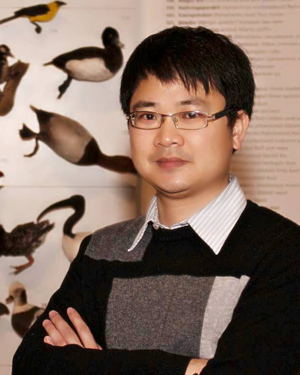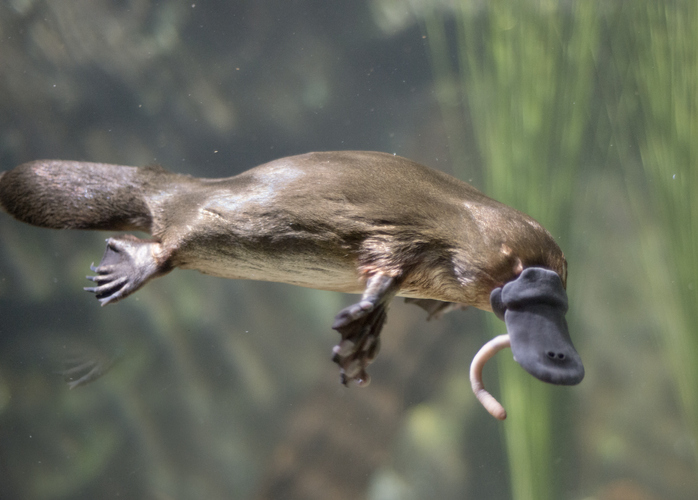British naval officer John Hunter, the second governor of New South Wales, Australia, discovered a strange animal in 1798 and then sent the fur with a simple sketch to his home country. Then the British scholars who saw the animal thought John Hunter was cheating.
The following year, when a specimen of the animal arrived at the Natural History Museum in London, zoologists thought it was a manipulated piece of several different animal parts. Therefore, some scholars tried to pull the fur to make sure there were no seams.
The platypus still possesses a number of bizarre features that are considered to be the strangest animals and strangest mammals on Earth. ⒸGetty Image Bank
–
The animal was the platypus, endemic to eastern Australia and Tasmania. There was a reason why scientists at the time considered real specimens of platypus as a manipulator. This is because the platypus still possesses a number of bizarre features that are considered to be the strangest animals and strangest mammals on the planet.
Platypus feeding their babies lay eggs instead of living babies. However, since there are no nipples, the breasts in the abdomen secrete milk during lactation. You are breastfeeding as if sweating from your body.
It looks like a beaver or a mole, but has a duck’s beak-like snout and webbed feet. These webs allow you to swim well in the water, but when you come up to the ground, they fold properly so that you can walk well on the surface. It has an amphibious multipurpose body structure.
The only animal with 10 sex chromosomes
Males, very rarely among mammals, secrete poison from the hind paws. This poison, which causes extreme pain in humans, is strong enough to kill small animals like dogs. Also, the platypus, unlike most mammals, has no teeth.
The duck-like beak has an electric sensor that can detect biocurrent, making it easy to find food even in muddy riverbeds. Moreover, unlike all other mammals on the planet with two sex chromosomes, it has a total of 10 sex chromosomes, including 5 Y chromosomes and 5 X chromosomes.
However, an international research team led by the University of Copenhagen in Denmark has created a unique genomic map of the platypus to find the answer to the origin of this bizarre feature. “Decrypting the platypus’s genome is critical to improving our understanding of how mammals, including humans, have evolved,” said Professor Guojie Zhang, who led the study.

Professor Guojie Chang, a biologist at the University of Copenhagen in Denmark. Ⓒzhanggjlab.org
–
According to the results of the study published in the latest issue of the international journal Nature, the reason why platypuses lay eggs even though they are mammals is thanks to a gene called vitellogenin. Chickens have all three genes of bitelogenin, which play an important role in egg yolk production.
But humans have lost all three genes in the course of evolution. However, in the case of platypus, it was found that despite the loss of two vitelogenin genes about 130 million years ago, it still carries the other gene and can continue to lay eggs.
Loss of genes responsible for tooth development
In all mammals, including humans, the bitelogenin gene has been replaced by a casein gene, which is responsible for the production of casein protein, a major component of milk. A new study found that the platypus also carries the casein gene.
In response, the researchers argued, “meaning that it was developed through the same genes derived from a common ancestor that lived more than 170 million years ago with the wet Jurassic early dinosaurs produced by all existing mammals.
Platypus is a monotreme that solves urination, defecation, and sexual reproduction with one hole. The closest ancestors of monotremes have teeth, but the platypus does not have teeth, but instead has only two horns that are used to crush food. A new study found that the platypus lost four of the eight genes responsible for tooth development about 120 million years ago.
Another characteristic of the platypus is that it is the only animal with 10 sex chromosomes. Thanks to the nearly complete genomic map created this time, the researchers can suggest that in the ancestors of monotremes, these 10 sex chromosomes were organized into rings and later split into many X and Y chromosome fragments.
The genomic map also reveals that most monotreme sex chromosomes have more in common with chickens than humans. This could be evidence of the evolutionary link between mammals and birds.
Although the platypus belongs to mammals, Prof. Guo Jie Chang, who concluded that it is genetically a mixture of mammals, birds and reptiles, was able to adapt successfully to a variety of modern environments because of the preservation of many of the original features of common ancestors. Said.
(292)
–

/cloudfront-us-east-1.images.arcpublishing.com/gruponacion/WMJ5B347KFH33H4RKBSN7EF2RA.jpg)
